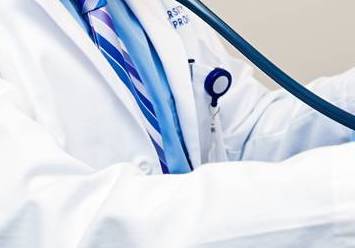Physical Rehabilitation of the Shoulder: Integrating Structure, Function and Treatment
December 2-3, 2016
Marquette University, Milwaukee, WI
Course Synopsis
This 2-day long course will provide a thorough framework of the anatomic, kinesiologic, and treatment foundations of the shoulder and associated regions of the upper limb.
Day 1 of the course is taught by Donald Neumann. This part of the course highlights the essential anatomic and mechanical interactions between the many muscle-and-joint systems of the shoulder. Clinical examples of pathokinesiology are well integrated into the material.
The material in Day I will be presented primarily through lecture format, enhanced by videos of joint fluoroscopy and persons with spinal cord injury, cadaver images, and illustrations taken from the textbook: Neumann DA: Kinesiology of the Musculoskeletal System: Foundations for Physical Rehabilitation, 2 ed (Elsevier 2010). Each illustration clearly describes the anatomic and mechanical basis for movement, providing the basis for understanding the foundations for many evaluation and treatments experienced by therapists and athletic trainers.
Day 2 of the course is taught by Andrew Starsky. This portion of the course examines multiple topics concerning the evaluation and treatment of the shoulder. Evidence Based Outcomes measures, special tests, and clinical prediction rules will be integrated with best practice to guide the evaluation of the shoulder. Research based interventions including therapeutic exercise and manual therapy will be used and practiced to guide optimal treatment of the shoulder and associated structures. Lab will focus on exercise prescription (include muscle monitoring with EMG), electrical stimulation for muscle weakness, and manual treatment techniques.
Course Objectives
After this 2-day course, participants shall be able to:
- describe the detailed structural and functional relationships of the joints of the shoulder complex.
- describe the general structure and function of the elbow and forearm joints.
- describe how the shoulder operates to achieve maximal reach of the upper limb as well a source of power for weight bearing throughout the upper limb.
- describe the pathokinesiologic mechanics behind several orthopedic and neurologic conditions of the upper quarter of the upper extremity.
- utilize kinesiological principles to guide evaluation and treatment choices for musculoskeletal conditions of the shoulder.
- discuss the pathology of shoulder conditions.
- discuss surgical interventions for selected shoulder pathologies.
- design rehabilitation programs for selected shoulder pathologies.
- describe evidence based evaluation tools and outcomes measures.
Course schedule and content
Program Agenda DAY 1: Dr. Neumann
- 8:30-10:00: Clinical Kinesiology of the Shoulder Complex, Arthrology and Anatomy
- 10-10:15: Break
- 10:15-noon: Finish Arthrology, Introduce Scapulothoracic Musculature
- Noon: lunch
- 1:00- 2:30: Muscles and Function of Entire Shoulder Complex: Maximizing Reach of the Upper limb
- 2:30-2:45 Break
- 2:45-4:15: Overall Upper Limb Kinesiology Involving the Shoulder, Elbow, and Forearm
- 4:15 Questions and Discussion
- 4:30 Adjourn
Program Agenda DAY 2: Dr. Starsky
- 8:30-10:00: Evidence based evaluation of the shoulder
- 10-10:15: Break
- 10:15-noon: Evidence based surgical interventions for the shoulder
- Noon: lunch
- 1:00- 2:30: Treatment techniques focused on therapeutic exercise
- 2:30-2:45: Break
- 2:45-4:30: Treatment techniques focused on manual therapy
- 4:30 Adjourn
13 ceu's applied for through WPTA
Note: This course is scheduled to be recorded for educational purposes. The course will be a future online offering for CEU’s. By registering for the course, all registrants hereby grant consent to possibly be shown in the videotape or heard on the videotape if they ask questions or make comments. Accommodations can be made for folks wishing to sit in the back of the room or to have their comment stricken from the video by alerting us the day of the event. Attempts will be made not to show participants or identify participants by name. Thank you for your consideration. If you have any questions or would like additional information regarding the video tape, please contact Diane Slaughter prior to the course date.
Faculty
Donald A. Neumann, Ph.D., P.T., FAPTA : Dr. Neumann received a B.S. in physical therapy from the University of Florida. After several years of practice and teaching in the area of rehabilitation of persons with spinal cord injury, he received a Ph.D. in Exercise Science from the University of Iowa. In 1986, he joined Marquette University where he is currently Professor in the Department of Physical Therapy. Don has received multiple awards from the American Physical Therapy Association that have recognized his teaching, writing, and research efforts, including being named a Catherine Worthingham Fellow of the APTA in 2008. Dr. Neumann received a Teacher of the Year Award at Marquette University, and was named Wisconsin's College Professor of the Year by the Carnegie Foundation. In 2015, he was awarded the Educational Service Award by the World Confederation of Physical Therapy (WCPT). Dr. Neumann has received Fulbright Scholarships to teach in Lithuania, Hungary, and Japan. He is the author of Human Kinesiology: Foundations for Rehabilitation, published by Elsevier, 2010, and co-author of Essentials of Kinesiology for the Physical Therapist Assistant, Elsevier, 2009. In 2005, Dr. Neumann authored a chapter on the Hip, published in the 41st edition of British Gray’s Anatomy. Donald served as an Associate Editor of JOSPT from 2002-2015.
Andrew Starsky, BSEE, MPT, Ph.D. Andrew Starsky obtained his bachelor’s degree in electrical engineering from Marquette University in 1992.He completed his Masters in Physical Therapy degree in 1998, and a PhD in Biomedical Engineering in 2007. He has been published in Physical Therapy, the Journal of Orthopedic and Sports Physical Therapy, and in Archives of Physical Medicine and Rehabilitation. Andy is currently a Clinical Associate Professor at Marquette University, teaching courses in electrotherapy, physical modalities, evidence based practice, and biomechanics. He has been teaching electrotherapy and biomechanics for 12 years and has traveled extensively to lecture on this topic. Andy has received research grants from the National Institute of Health, the American Heart Association, and the National Institute on Disability and Rehabilitation Research.





